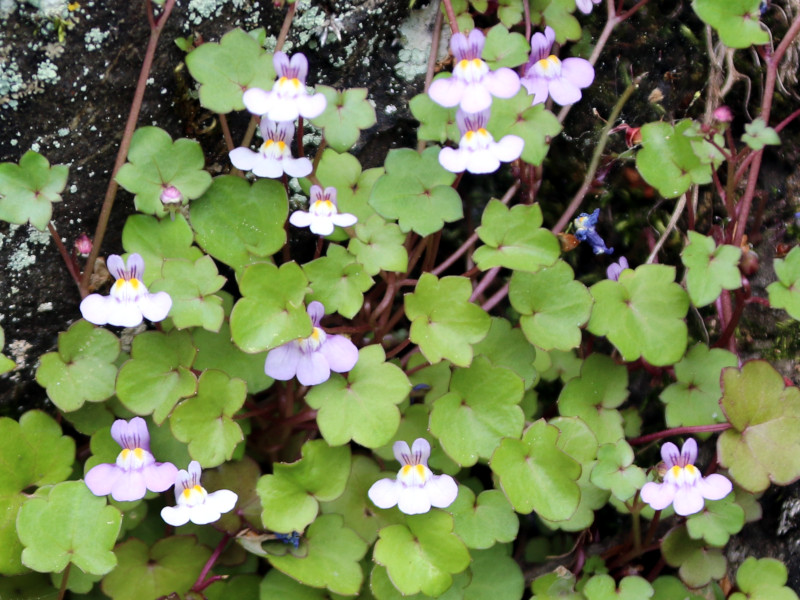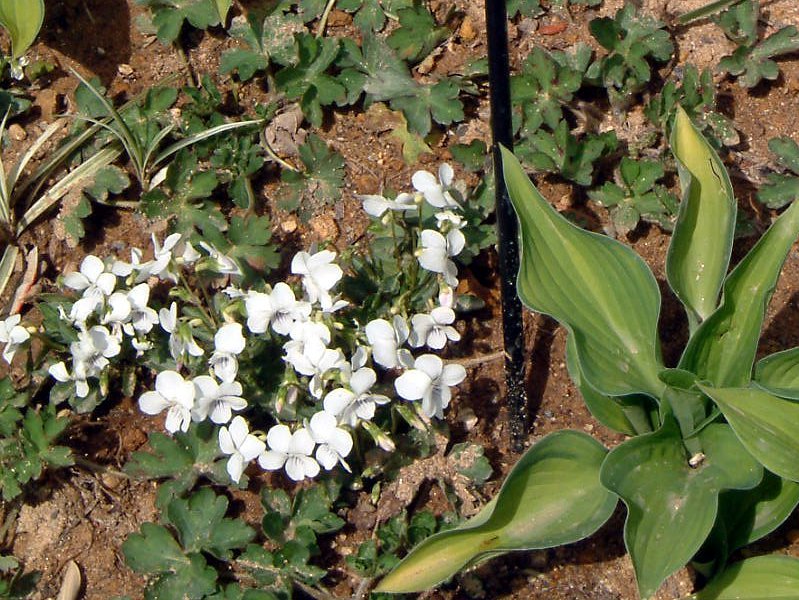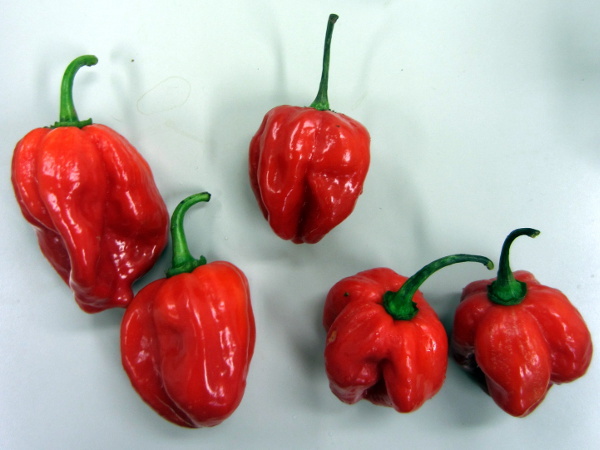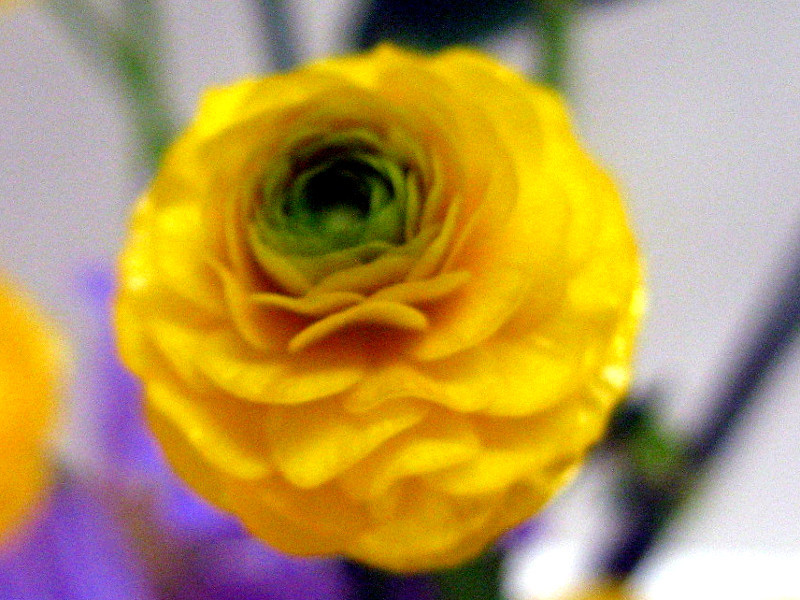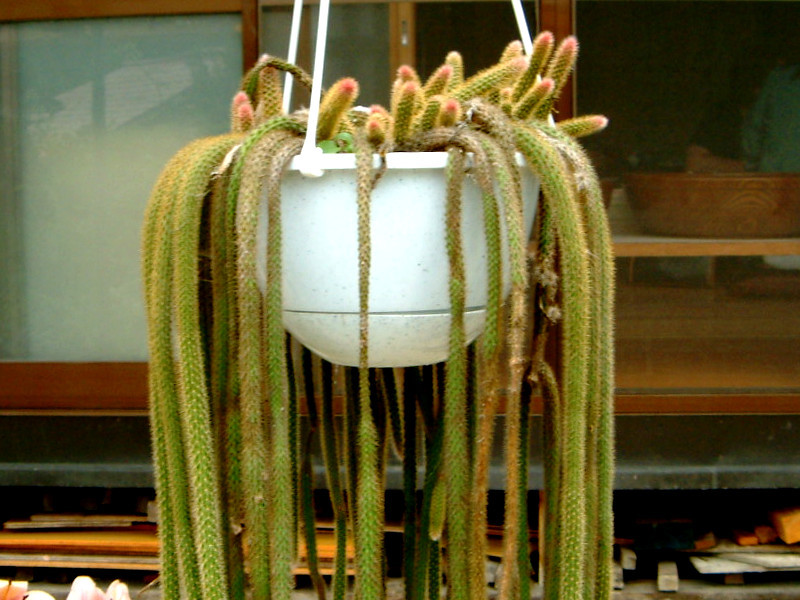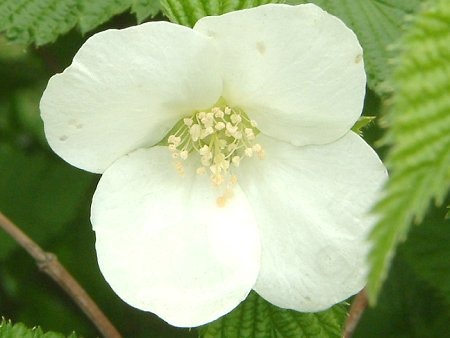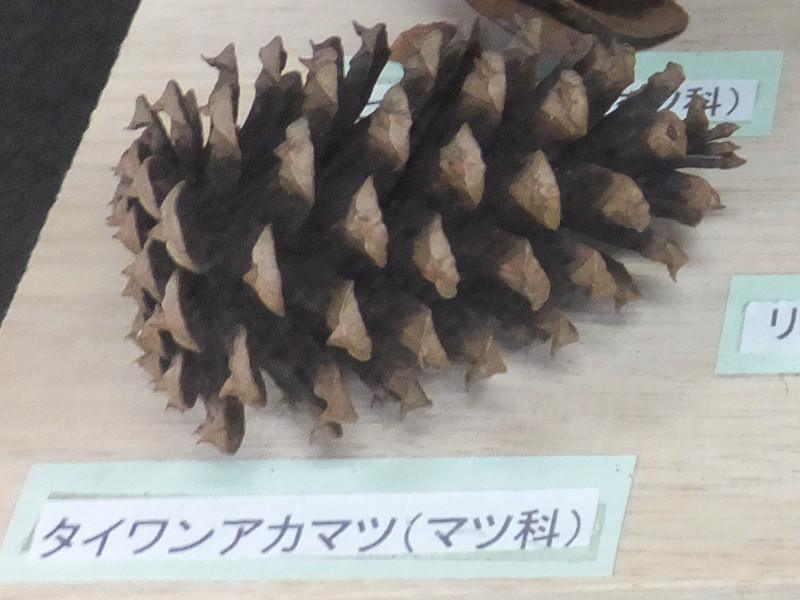Cymbalaria muralis
- Flower nameCymbalaria muralis
- Scientific nameCymbalaria muralis
- Alias蔦葉海蘭, ツタガラクサ, コロセウムアイビー, シンバラリア, Cymbalaria, muralis
- Place of origin Mediterranean Sea
- Place of floweringFields and footpaths
- Flowering seasonApril, May, June, July
What is Cymbalaria muralis
Ivy leaved toadflax, Cymbalaria muralis (scientific name: Cymbalaria muralis) is a naturalized perennial vine native to the Mediterranean Sea and belonging to the genus Cymbalaria. It is found wild on levees, banks, and roadsides from Hokkaido to Honshu and Shikoku. The stems are 10 to 40 cm long, well branched, and crawl horizontally on the ground. From April to July, a long petiole extends from the leaf axils and produces a single lip-shaped, 1-cm-diameter flower with a talus. The upper lip has two lobes and the lower lip has three lobes with a dark purple stripe on the upper lip. The flowers are followed by a spherical capsule. The genus name "muralis" means "wall" in Latin.
C. muralis is similar to C. tokiwabaku (Mazus pumilus) and C. murasakiensis (Mazus miquelii), which belong to a different family and genus, Cercidiphyllaceae.
Common name: Ivy leaved toadflax, Cymbalaria muralis , scientific name: Cymbalaria muralis), also known as Ivy arabesque, Coloseum ivy, Origin: Mediterranean Sea, Native to Flowering season: April to July, Flowering place: leaf axils, Inflorescence: single, Flower color: red-purple, Corolla: lip-shaped, Flower diameter: 1 cm, Number of stamens: 2, Number of pistils: 1, Fruit type: Fruit type: capsule, fruit diameter: 0.5 cm, Note: Imported as an ornamental during the Taisho era, it was lost and has become a naturalized plant.
